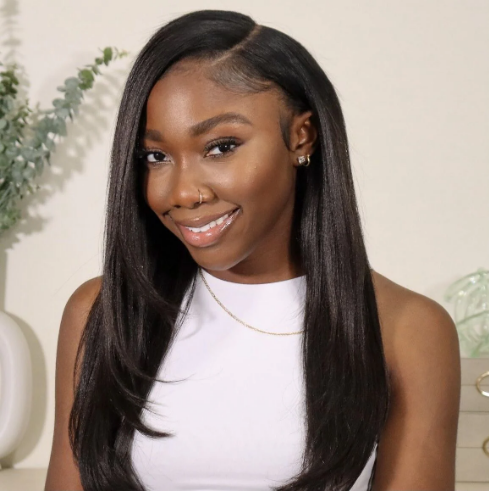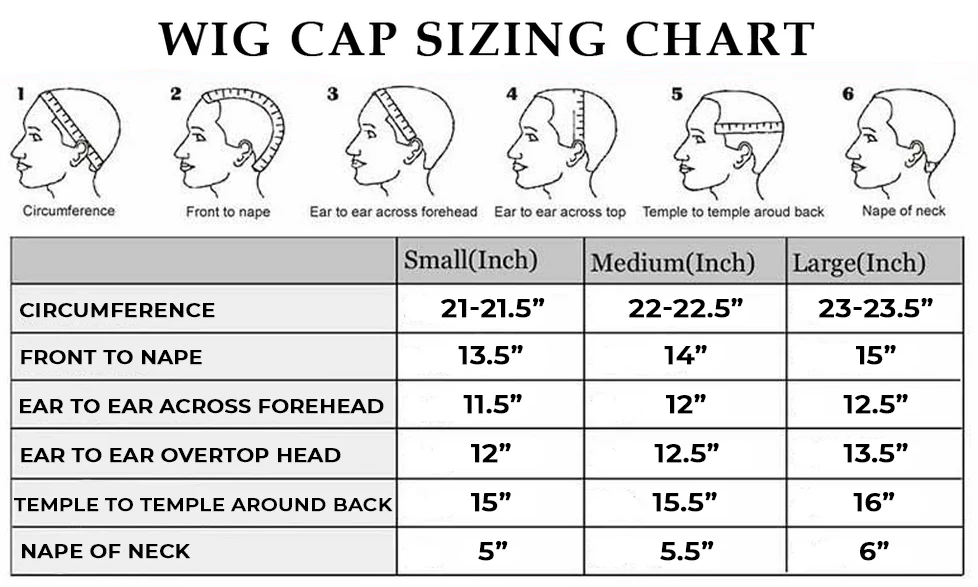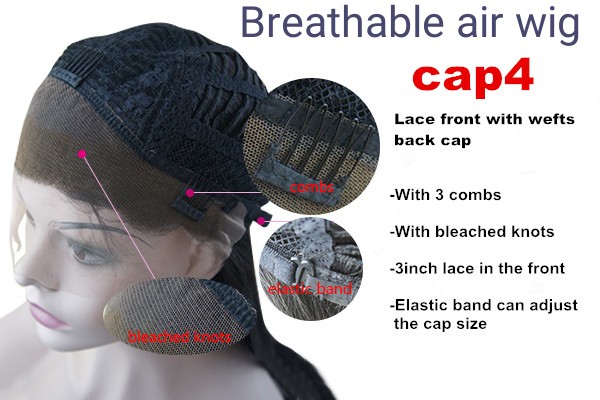Wearing wigs has become increasingly popular, whether for fashion, convenience, or necessity. However, many wig wearers experience the common problem of itchiness under their wigs. It can be uncomfortable and distracting, detracting from the confidence that wearing a wig is supposed to offer. Have you ever wondered why your wig makes your scalp itch? You’re not alone. Understanding the root causes of this issue is the first step towards finding solutions that allow you to wear your wig comfortably.

Why do wigs make my scalp itch
10 Reasons Why Your Wig Is Itchy and How to Fix It.
1. Ill-Fitting Cap
The first and perhaps most common reason for wig itchiness is an ill-fitting cap. If the wig cap is too tight, it can cause irritation and bumps on the scalp, leading to discomfort and potentially infections. Conversely, a cap that is too loose may shift, causing friction against your scalp.
To ensure an appropriate fit, it is crucial to take proper head measurements before purchasing a wig. Poorly fitting wigs are not only uncomfortable but may also compromise the aesthetic you’re aiming to achieve.
**Solution:** Measure your head accurately and check the sizing guide provided by the wig manufacturer. Adjustable straps or hooks within the wig cap can also help in fine-tuning the fit. If the wig is custom-made, providing your exact measurements ensures the best fit.
We offer regular small ,average ,large and custom cap size.

Does synthetic hair make you itch
2. Allergies to Synthetic Fibers or Styling Products
Allergies can be a hidden culprit causing your scalp to itch.
Synthetic fibers or specific styling products used on wigs can trigger allergic reactions. If you notice increased itching after using a new wig or product, it may be wise to investigate potential allergens. Some individuals react adversely to certain brands of synthetic fibers or chemicals in styling products.
**Solution:** Conduct a patch test before using new products. Opt for hypoallergenic wigs or those made from human hair wigs if you’re particularly sensitive. Additionally, look for styling products that are free from harsh chemicals and fragrances.
3. Permatease
Permatease refers to the short, stiff fibers added to wigs to create volume. While effective for styling, permatease can sometimes escape the wig cap and irritate the scalp. This is especially problematic for individuals with sensitive skin.
**Solution:** Ensure the permatease fibers are well-contained within the wig cap. If you’re experiencing irritation, consider a wig with less or no permatease. For minor adjustments, trim any fibers that poke through the cap.
Why do wigs make my scalp itch
4. Heat and Sweating
Wearing a wig in hot temperatures or while engaging in activities that make you sweat can lead to itchiness. When the scalp perspires, the moisture can get trapped under the wig, causing discomfort and irritation. High temperatures exacerbate this problem, making it almost unbearable to wear a wig for extended periods.
**Solution:** Consider choosing wigs made from breathable materials and those designed to ventilate well during hot conditions.

5. Securing Natural Hair Under the Cap
Properly securing your natural hair under the wig cap is crucial to avoid itchiness. Loose hair can create friction, causing irritation on the scalp. Inadequately secured hair may also shift, creating lumps and uneven surfaces under the wig, adding to discomfort.
**Solution:**Braiding or twisting your hair close to the scalp can also help in providing a smooth base for the wig to rest on.
6. Glues and Adhesives
While glues and adhesives are effective for securing wigs, they can cause skin irritation for some people. Prolonged use of adhesives without proper cleaning can exacerbate this issue, leading to itchiness and even allergic reactions.
**Solution:** Test a small amount of adhesive on your skin before full application to check for any allergic reactions. Clean both the skin and the adhesive thoroughly after each use. Choose adhesives labeled as hypoallergenic to reduce the risk of irritation.
7.Pre-existing Skin Rashes or Irritations
If you have pre-existing skin conditions, abrasions, or irritations around the hairline or on the scalp, wearing a wig can make the problem worse. These conditions create a sensitive environment, making it more susceptible to irritation from the wig’s material.
Solution: Treat any existing skin conditions before wearing a wig. Use topical treatments as recommended by dermatologists and avoid wearing wigs until your scalp has healed.
How to take care of your hair under a wig
8. Dirty Natural Hair
Unwashed natural hair can contribute to itchiness when wearing a wig. Oils, dirt, and product build-up on the scalp can clog hair follicles, causing discomfort and itching. This is a commonly overlooked aspect that significantly impacts how comfortable your wig feels.
Solution: Maintain a regular washing schedule for your natural hair. Clean hair reduces the likelihood of irritation and promotes a healthier scalp. Use scalp-friendly shampoos and conditioners to avoid drying out your skin.
9. Wearing Wigs Over Damp Natural Hair
Much like wearing wet clothing, wearing a wig over damp hair can be highly uncomfortable. The trapped moisture under the wig cap creates a breeding ground for bacteria and irritates the scalp, resulting in itchiness.
**Solution:** Ensure that your natural hair is completely dry before putting on a wig. Use a hairdryer if necessary to speed up the drying process. Make sure the scalp and hair are free from excess moisture to avoid discomfort and potential fungal infections.
10. Phantom Itching
Phantom itching is a term used to describe the itchiness that new wig wearers often feel. This sensation is similar to getting used to new shoes or braces and occurs as your scalp adjusts to the wig.
**Solution:** Distract yourself from the itching by engaging in activities that take your mind off the discomfort. Over time, your scalp will adapt to wearing a wig, and the phantom itching will subside. Consider gradually increasing the amount of time you wear the wig each day to help your scalp acclimatize.
Conclusion
Itchiness under a wig can be a frustrating experience, but understanding the causes can help in finding effective solutions. From ensuring a proper fit to identifying allergic reactions and maintaining scalp hygiene, several factors can contribute to your discomfort. By addressing these issues, you can enjoy the confidence and beauty that wigs offer without the annoying itchiness. Make sure to follow the solutions discussed here, and don’t hesitate to seek advice from professionals if the problem persists. Your comfort is paramount, and a well-fitting, carefully selected wig can make all the difference.